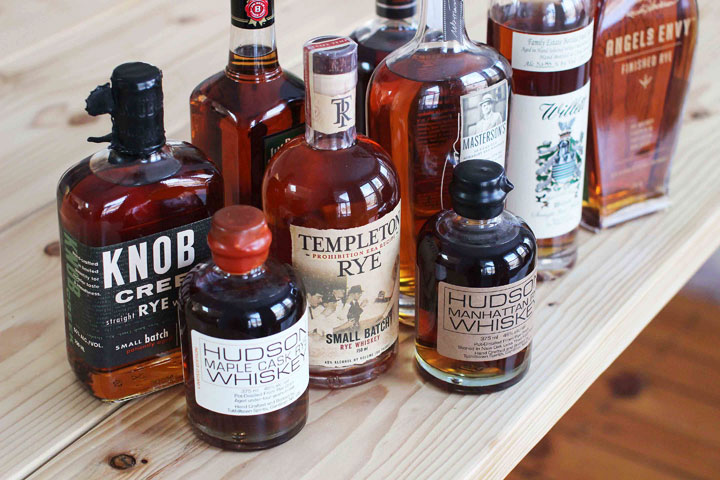Fans of brown spirits are taking a rye approach to imbibing.

Hot on the heels of the bourbon boom, more ryes are appearing on shelves as consumers explore whiskey’s spicier, fruitier side. “People are rediscovering rye whisky and its unique flavour,” says Dan Tullio, master ambassador for Canadian whisky for Beam Suntory, which just launched its Alberta Rye Dark Batch Whisky.
READ MORE: Scotch struts its milder side to appeal to bourbon drinkers
Dark Batch actually capitalizes on two trends: At the same time American drinkers are developing a taste for rye, they also have become increasingly interested in Canadian whisky (which Canadians — like Scots — spell without the “e”). Alberta Rye Dark Batch, made at Alberta Distillers, the largest producer of 100 per cent rye whisky in North America, is a blend of 91 per cent rye, 8 per cent bourbon and 1 per cent sherry for smoothness.
A little bit lighter and spicier tasting than bourbon, rye whiskey is made, obviously, from rye, a grass related to wheat. Where bourbon has to be made from at least 51 per cent corn, rye must be at least 51 per cent rye. Both rye and bourbon must be aged in charred new American oak barrels, and a rye that’s been aged at least two years can be labeled as “straight rye” whiskey. Rye whiskey typically also contains some corn and malted barley.
And consumers are drinking it up. Rye sales were up 40 per cent by volume, to 520,000 cases, in 2014, according to the U.S. Distilled Spirits Council.
READ MORE: The ultimate whiskey pub crawl in New York City
The taste for rye has tracked the growth in the bourbon market, particularly as consumers gravitate toward bourbons with a higher rye content, such as Four Roses and Bulleit (both brands also offer true rye whiskeys). In fact, the growing interest in rye has triggered a flood of new bottles coming to market, including the cultishly popular Jefferson’s Rye and Angel’s Envy, as well as more common Jim Beam Green Label and Knob Creek.

At BevMo!, a California-based chain specializing in wine and spirits, ryes clearly are on an upswing, says Ted Carmon, BevMo! category manager for spirits.
“Bourbon is doing extremely well, but rye is just a new vein for the whiskey drinker.” He traces the trend to the interest in recreating pre-Prohibition era cocktails, many of which are rye-based. “Quite honestly, the quality of rye has improved a lot over the years, so it’s a lot of fun for the mixology world to play with quality whiskey,” he says.
And who’s drinking all this rye (and all those cocktails)? A lot of the demand is coming from brown-spirits loving Millennials, who’ve come to rye by way of their interest in classic cocktails, says Brian Bowden, vice-president of spirits, beer tobacco and beverages for BevMo!
“With the growing interest in high-quality spirits and a surge in contemporary cocktail culture, bartenders and curious drinkers alike are now looking for those bigger, fuller flavours in rye whiskey,” says Adam Harris, Knob Creek bourbon ambassador.
The rules for rye are different in Canada than in the U.S. In Canada, a whiskey can be labeled rye even if the percentage of rye in the blend is small.
“Rye stands out,” says Mark Bylok, author of the recently released The Whisky Cabinet. ”People started tasting rye and enjoying it, they wanted that character and spiciness.” But ryes today “are just in their infancy,” he points out. The next big thing is going to be long-aged ryes. “You’re going to see the 15- to 25-year-old ryes coming out and they’re going to be absolutely fantastic.”

Comments